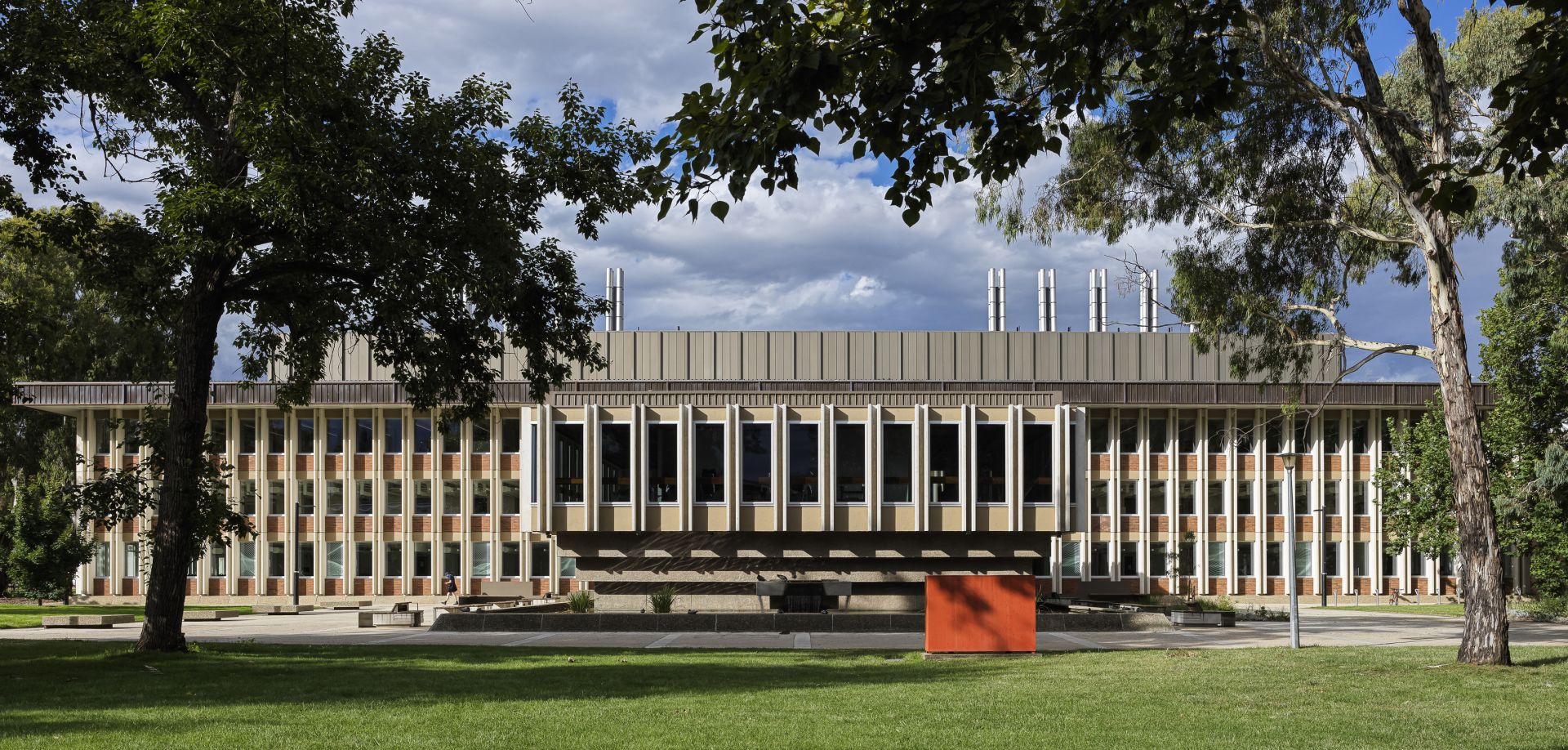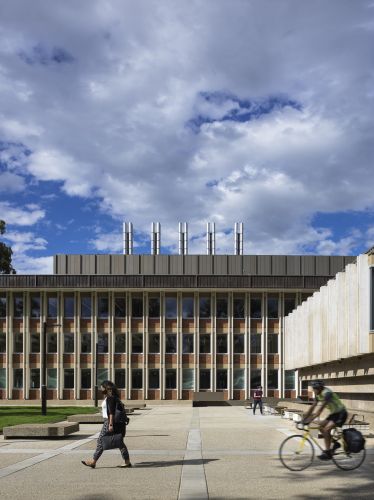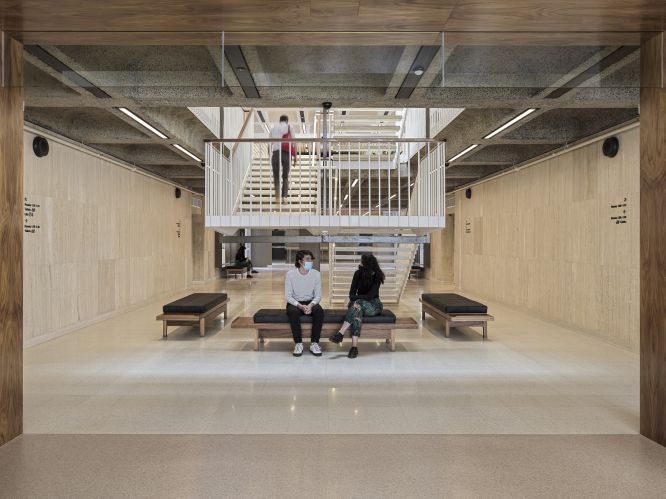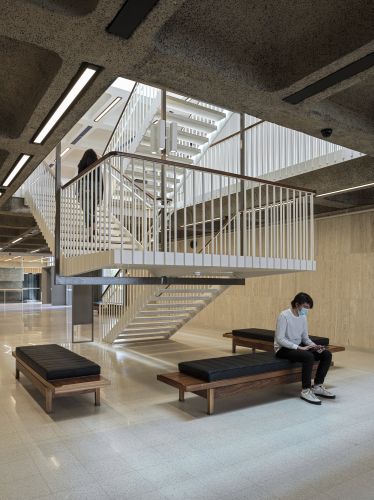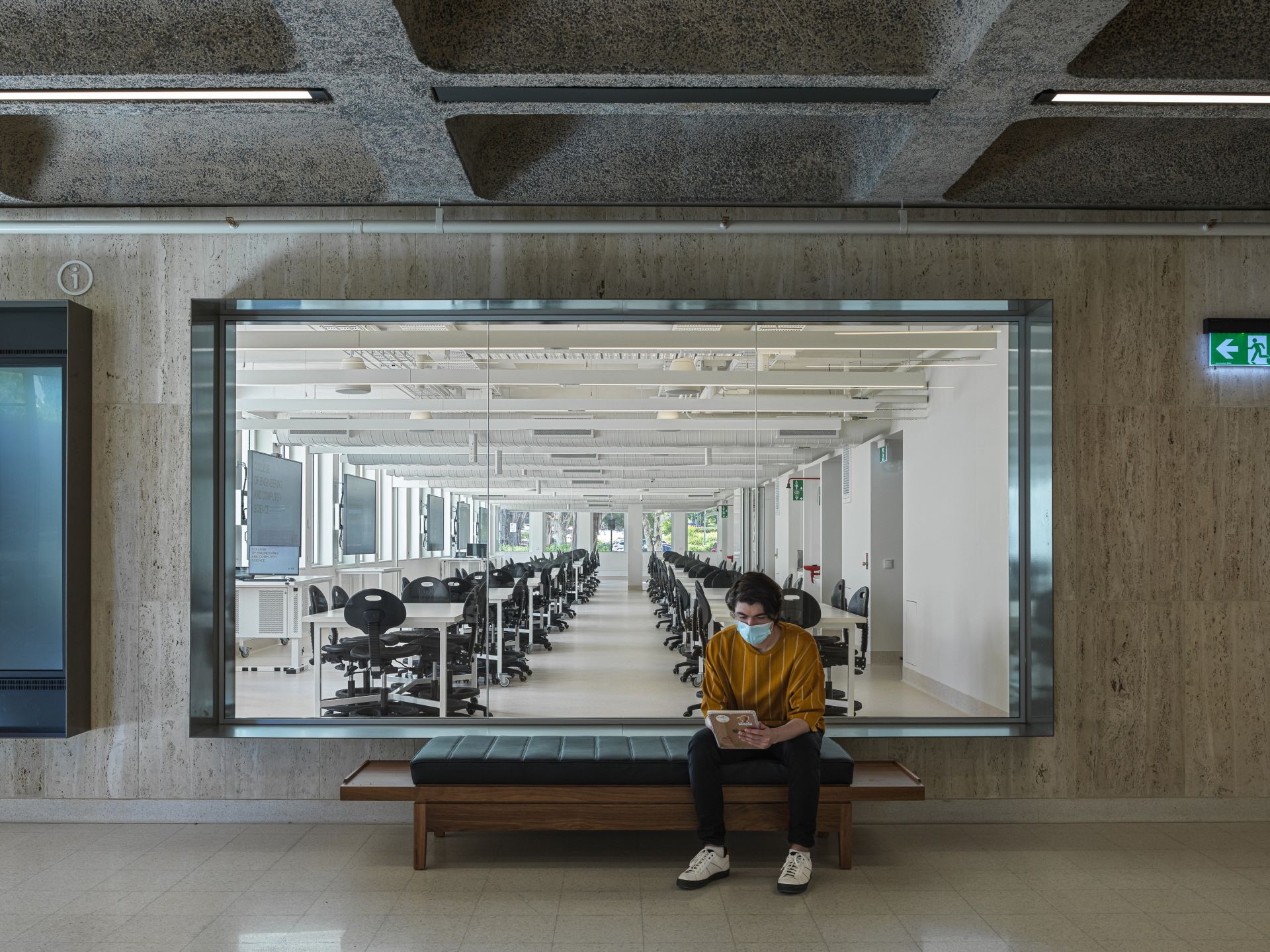Sustainability highlights
The conservation and restoration of the 1968 ANU Birch Building improves long-term sustainability outcomes for ANU.
Highlights include:
- Preserving the original structure, façade, staircase, and skylight to minimise raw construction materials and reduce carbon footprint while enhancing the building’s modernist character.
- Reusing and recycling materials wherever possible, including terrazzo, travertine, and timber.
- Removing asbestos and contaminated building materials, including 25kg of Mercury.
- Exceeding insulation standards by 10% and new glazing performance by 10% to improve thermal performance.
- Increasing natural daylight levels inside and introducing a daylight monitoring system to automate artificial lighting and minimise power usage.
- Introducing a new ‘economy cycle’ mechanical air conditioning system to provide ‘free cooling’ year-round.
- Employing recycled water and rainwater to irrigate the external landscape.
- Including flexible modules to facilitate adaptive re-planning and enable the School of Engineering to evolve and extend its life cycle.
Awards
2022 National Trust (ACT) Heritage Awards — Outstanding Project — ANU Birch Building Refurbishment
2022 AIA Australian Architecture Awards: National Award for Educational Architecture
2022 AIA Australian Architecture Awards: National Award for Heritage Architecture
2022 AIA ACT Architecture Awards: Canberra Medallion
2022 AIA ACT Architecture Awards: J.S. Murdoch Award for Heritage Architecture
2022 AIA ACT Architecture Awards: Enrico Taglietti Award for Education Architecture
2022 AIA ACT Architecture Awards: W Hayward Morris Award for Interior Architecture
2022 AIA Australian Architecture Awards: National Commendation for Interior Design
